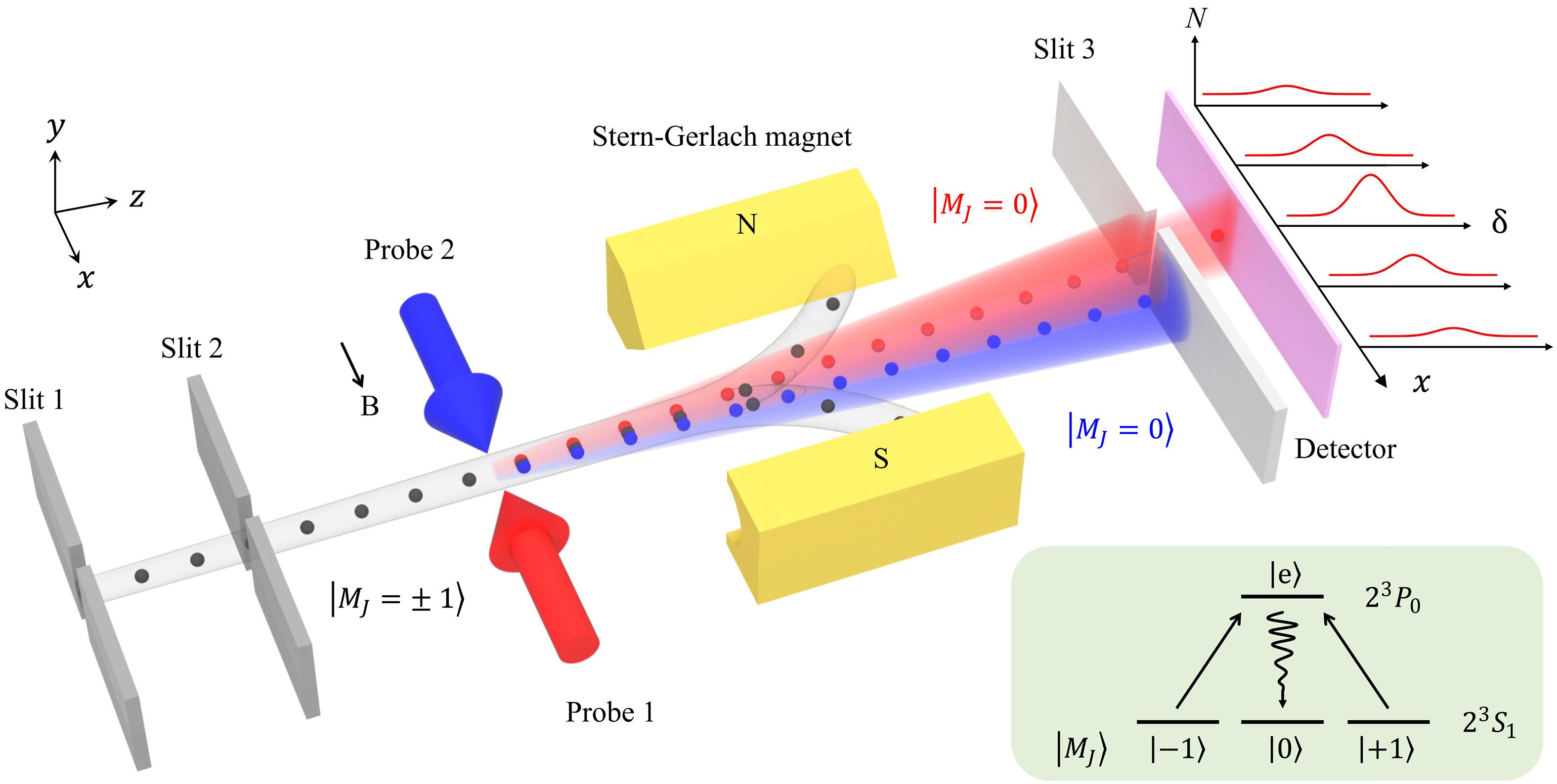后选择改变了氦在原子束中的跃迁频率
IF 12.5
1区 综合性期刊
Q1 MULTIDISCIPLINARY SCIENCES
Science Advances
Pub Date : 2025-02-28
引用次数: 0
摘要
后选输出状态可以有效地放大测量中的微弱信号。然而,后选择(PS)效应也可能在精度测量中引入意想不到的偏差。本文利用原子束研究了PS对氦(4He)的23S−23P跃迁的精密光谱的影响。我们直接观察到,基于原子位置的PS导致测量到的跃迁频率发生位移,大约为- 55 kHz。考虑到这个PS位移后,我们得到23S1 - 23P0转换的校正频率为276,764,094,712.45±0.86 kHz。将这一结果与现有的3He数据相结合,我们得出了平方核电荷半径差的值,该值与μ氦离子的测量值有σ偏差,这可能指向挑战量子电动力学中轻子普适性的新物理学。本文章由计算机程序翻译,如有差异,请以英文原文为准。

Postselection shifts the transition frequency of helium in an atomic beam
Postselecting output states can effectively amplify weak signals in measurements. However, the postselection (PS) effect may also introduce unintended biases in precision measurements. Here, we investigate the influence of PS in the precision spectroscopy of the 23S − 23P transition of helium (4He) using an atomic beam. We directly observe that PS based on atomic positions causes a shift in the measured transition frequency, amounting to approximately −55 kHz. After accounting for this PS shift, we obtain a corrected frequency of 276,764,094,712.45 ± 0.86 kHz for the 23S1 − 23P0 transition. Combining this result with existing data for 3He, we derive a value for the difference in squared nuclear charge radii, which shows a σ deviation from measurements of muonic helium ions, potentially pointing to new physics that challenges lepton universality in quantum electrodynamics.
求助全文
通过发布文献求助,成功后即可免费获取论文全文。
去求助
来源期刊

Science Advances
综合性期刊-综合性期刊
CiteScore
21.40
自引率
1.50%
发文量
1937
审稿时长
29 weeks
期刊介绍:
Science Advances, an open-access journal by AAAS, publishes impactful research in diverse scientific areas. It aims for fair, fast, and expert peer review, providing freely accessible research to readers. Led by distinguished scientists, the journal supports AAAS's mission by extending Science magazine's capacity to identify and promote significant advances. Evolving digital publishing technologies play a crucial role in advancing AAAS's global mission for science communication and benefitting humankind.
 求助内容:
求助内容: 应助结果提醒方式:
应助结果提醒方式:


